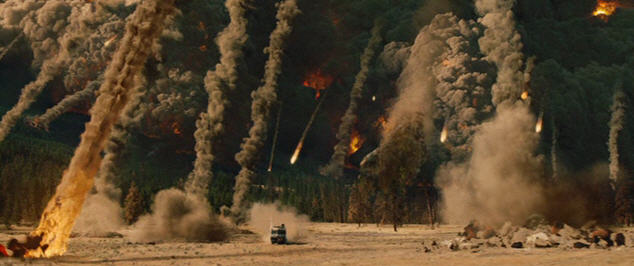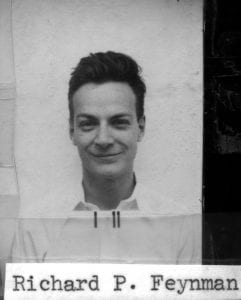 The Tsar Bomba is the biggest man made explosive ever detonated on the face of the earth. It had an explosive yield equivalent to fifty million tons of TNT. When I read about the power of the weapons man has created I sometimes want to go hide, quivering, in a bunker somewhere. How would you feel if I told you that there is a place in the United States that is sitting on an explosive yield almost 20,000’s times that of the Tsar Bomba [4]. And that it’s on schedule to explode any day now.
The Tsar Bomba is the biggest man made explosive ever detonated on the face of the earth. It had an explosive yield equivalent to fifty million tons of TNT. When I read about the power of the weapons man has created I sometimes want to go hide, quivering, in a bunker somewhere. How would you feel if I told you that there is a place in the United States that is sitting on an explosive yield almost 20,000’s times that of the Tsar Bomba [4]. And that it’s on schedule to explode any day now.
Back in the 1960’s Bob Christiansen of the United States Geological Survey asked one of the most horrifying questions we’ve ever asked. It probably went something like this “All of Yellowstone’s geysers and hot springs are obviously volcanic, so where is the volcano?”. Christiansen had the good luck to live in a time where NASA was starting to take satellite photos from space and so he was able to see what Yellowstone looks like from above. And what did it look like? One enormous caldera. The whole 35 by 45 mile crater was a single super volcano [2].
The last time it went off it’s explosion was estimated to have had a yield of almost nine hundred thousand Megatons with an ash-fall that covered most of the US west of the Mississippi. Now I’ve already tried to put that number in perspective by saying that it is almost twenty thousand times greater than the Tsar Bomba, but let me try again. The combined nuclear arsenals of all the powers in the world is about one and a half thousand megatons. This explosion was nearly six hundred times as powerful as the simultaneous explosion of ever nuke on earth.
Over the last eighteen million years this hot spot has had occasional explosions and intermittent slower lava flows. Over the last two million years it’s had a super eruption semi regularly every six hundred thousand years. That last eruption which I should mention was the smallest of the three super-explosions, was six hundred and thirty thousand years ago. We’re overdue for an eruption that would coat the US with ash, send us into a global winter, and level a solid chunk of the Midwest.
Now stop panicking, there’s a couple important things to keep in mind which all basically boil down to statistics. First off, I said that these explosions have a semi-regular schedule but that’s a vast oversimplification. Imagine rolling a 6 sided dice over and over again. How many times will you have to roll it before a 1 comes up? The answer is roughly 6 times, but you could roll a 1 your first time, or you might get a string of bad rolls and not get a 1 till the twentieth roll. The important thing to see here is that each roll of the dice isn’t effected by the rolls around it. My basic intuition around fault-lines, earthquakes, and volcanos, seems to say that pressure should build and build and build and then release all at once before waiting to “charge back up”. But most of the actual data we have seems to show something more like rolling dice, where as the power of the event goes up exponentially the likelihood of it happening goes down exponentially [3]. Yellowstone blowing up is more like rolling a 1 on a die with a simply enormous number of sides, than it is like a ticking time bomb waiting for it’s moment. In fact in any given year, scientists estimate Yellowstone has about a one in seven hundred thousand chance of going off. The number of Earthquakes, patients arriving in an emergency room, and meteorites falling in a given span of time all are closely approximated by what’s called a Poisson distribution. One of the core properties of a Poisson distributions is that they are “memoryless”, which means the expected time to an event doesn’t decrease as time goes by.
Every once in a while, I see an article talking about how we’re “on schedule” for another big earth quake in the San Fransisco Bay Area. Or how we’re “on schedule” for another mass extinction event, magnetic storm, reversal of the earths magnetic poles, or whatever. There are some cosmological events that take place on nice regular cycles, the earth going around the sun for instance. But most disasters are statistical events with a small chance of happening on any given year. And by and large the event not having happened in a while doesn’t make it more likely to occur now. So please get out of your bunker, it’s okay, Yellowstone is probably not going to blow up this year.
All that said, the world is a big place and unlikely things happen all the time. And, in February of 2018, Yellowstone was hit with a quake storm with over 200 measurable quakes over the course of a week and a half [1]. So maybe keep that bunker stocked anyway, just in case.
[1] Bartels, Meghan. “Yellowstone Supervolcano Earthquake Swarm Hits 200 Shakes in Less than Two Weeks.” Newsweek, Newsweek, 20 Feb. 2018, www.newsweek.com/yellowstone-supervolcano-earthquake-swarm-hits-200-shakes-less-two-weeks-812813.
[2] Bryson, Bill. A Short History of Nearly Everything. Black Swan, 2016.
[3] Silver, Nate. The Signal and the Noise: the Art and Science of Prediction. Penguin, 2013.
[4] “TNT Equivalent.” Wikipedia, 12 Mar. 2018, en.wikipedia.org/wiki/TNT_equivalent.


